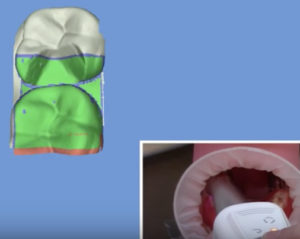The realization of mobile dental prostheses can take place following two distinct procedures: the traditional procedure, which involves the manual creation of prostheses, and the computer guided technique.
Removable dental prostheses: the advantage of technology
 The technology has improved every type of dental treatment, from implantology to orthodontics. In particular, the CAD / CAM technology has had a positive impact both in the field of diagnostics and in the treatment phase and, as regards removable dental prostheses, also in the production phase.
The technology has improved every type of dental treatment, from implantology to orthodontics. In particular, the CAD / CAM technology has had a positive impact both in the field of diagnostics and in the treatment phase and, as regards removable dental prostheses, also in the production phase.
Using CAD / CAM technology for the production of dental prostheses means optimizing processes and reducing the time required for the acquisition of patient information by the dentist to just two sessions.
Before the introduction of CAD / CAM technology, the traditional protocol called for many more appointments by the dentist to collect all the data to be transferred to the dental laboratory for the construction of the prosthesis.
How much technology affects times and costs for the production of removable prostheses
To pragmatically highlight the difference between the construction of dental prostheses with the aid of CAD / CAM technology and the traditional protocol, a group of Swiss students in the last year of the faculty of dentistry compared the clinical time and costs for production of complete removable dental prostheses.
The study was published in the Journal of Dentistry.
The students made total dental prostheses using the two different protocols, the traditional one and the digital one. For each prosthesis made with the two different methods, costs and times have been calculated, taking into consideration the following parameters:
- clinical times;
- cost of materials;
- laboratory times.
The data collected revealed the following results:
- the traditional protocol needs longer clinical times and therefore longer sessions for the dentist;
- the cost of materials was higher in the traditional protocol;
- the cost of the laboratory is lower with the digital protocol;
- making a synthesis between times and costs, a lower overall cost was evident for the realization of dental prostheses with digital protocol.
 Realizing complete removable dental prostheses with the aid of CAD / CAM technology therefore has advantages not only for the dentist, who benefits from the possibility of digitally detecting the patient’s anatomy and accessing the information quickly and with extreme precision, but also for the patient.
Realizing complete removable dental prostheses with the aid of CAD / CAM technology therefore has advantages not only for the dentist, who benefits from the possibility of digitally detecting the patient’s anatomy and accessing the information quickly and with extreme precision, but also for the patient.
In fact, technology makes it possible to reduce the number of sessions taken by the dentist, which means not only a reduction in treatment times, but also a real reduction in costs. Completely edentulous patients who need rehabilitation on the entire arch and cannot be subjected to implantology, can find a valid alternative in mobile prostheses made with digital protocol.
















